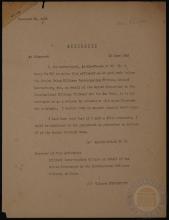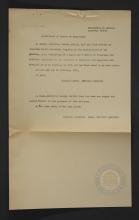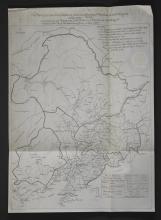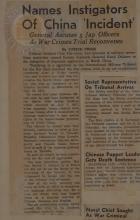Affidavit of Ai-Sin-Cho-Lo PU YI
Contributors:
Description:
Document No. 2456. Affidavit of Ai-Sin-Cho-Lo PU YI (former Emperor of Manchukuo) taken at Habarvosk "made before the Soviet Union Military Interrogating Officer, Colonel Kudriavtsev." Translation of full affidavit. Topics include: biography of Pu Yi; Japanese occupation of Manchuria; actions of the Kwantung Army; governance of Manchukuo; the Privy Council.
Date:
1946CE Jun 12th






